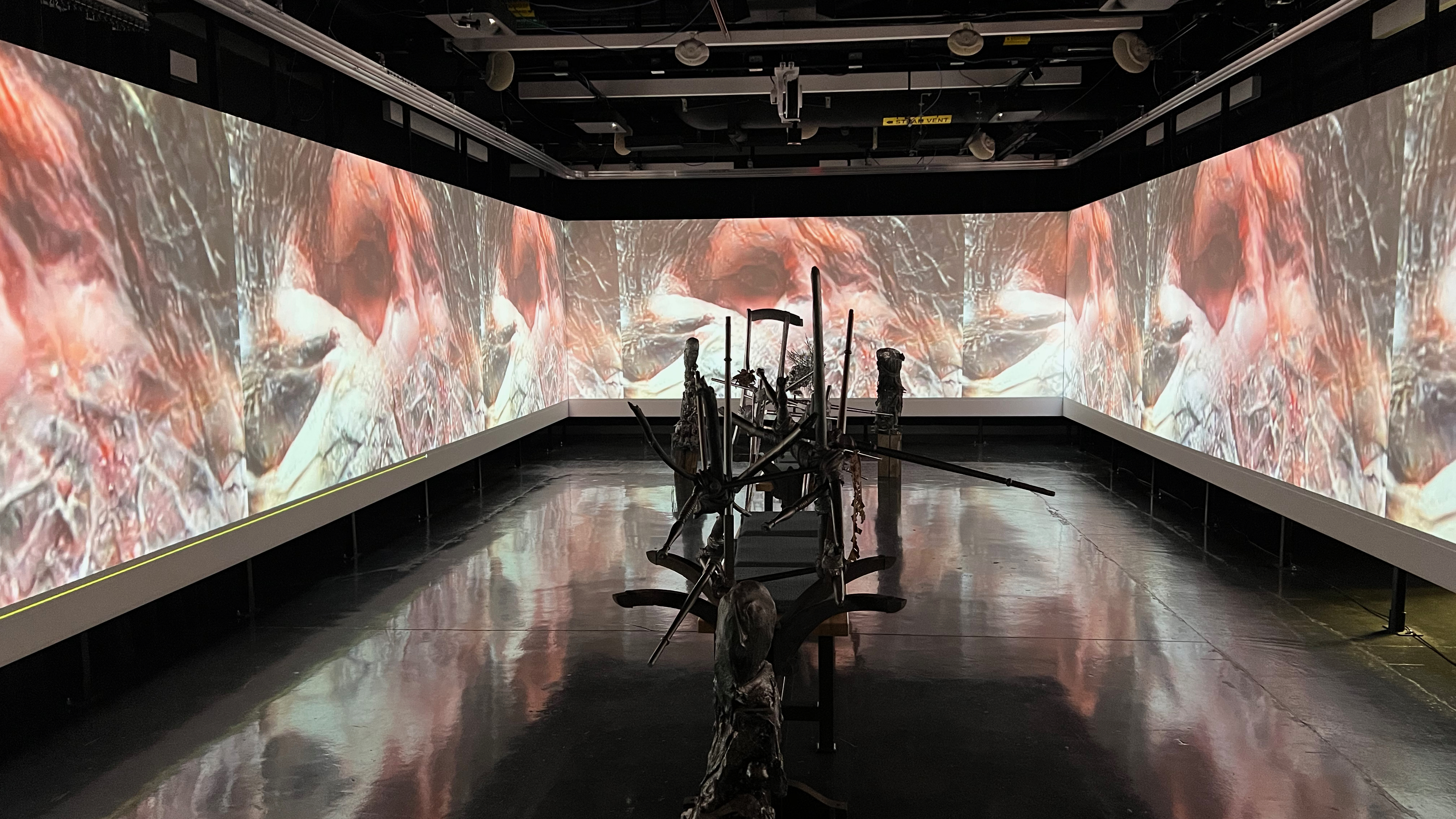Kent State's AR, VR, and XR Makerspace with 360-degree Projection, and 3D Spatial Audio
Kent State's Black_Lab goes beyond the traditional cave to support reconfiguring of cameras, projectors, and other supporting technologies.

Moving outside the traditional cave, Kent State University’s Design Innovation (DI) department created the Blank_Lab, a makerspace which functions as a ‘black box’ environment for investigating collaborative experiences that bridge the scope of immersive technologies, including augmented, virtual and extended reality tools.
“It’s a makerspace with a range of AR, VR and XR technologies,” said J.R. Campbell, executive director, Design Innovation Initiative for Kent State University. “Rather than creating a dedicated cave or a static projection environment, we created a larger one with a hung grid ceiling to allow for a hung curtain wall and support reconfiguring of supporting cameras, projectors and other components. We integrated screen mounts that support 360-degree projection and a 15-channel audio system to support the ability to experiment with 3D spatial audio.”
The space is designed to be re-configurable to support both the development and demonstration of projects utilizing these technologies. In all cases, the aspiration is to support group experiences of up to 15 people, regardless of whether users are engaging with AR/VR headsets and/or experimenting with projections to create ‘cave-like’ experiences. The Blank_Lab’s main space has a hung grid ceiling allowing for a hung curtain wall and to support reconfiguration of supporting cameras, projectors, etc. The curtain wall allows for wiring, speakers, and other supporting technologies to be strung behind the wall without visibility to visitors.

Warping and Blending
Scalable Display Technologies software was chosen for the Blank_Lab to automatically warp and blend multiple projectors across the 360-degree projection to create a seamless display. Founded in 2004, Scalable is the original inventor and patent holder of camera-based automatic warp and blend technology.
“Scalable Display Technologies answered a unique challenge for the Blank_Lab,” Campbell noted. “The other vendors we were considering had completely fixed packages with controlled projectors and software. We are not a single-use case scenario. We required a solution that would flexibly support our maker environment. We wanted the ability to change components as needed. We purchased ten prosumer-level projectors and we needed a software solution that would allow us to effectively create a seamless image around a 360-degree environment.”
Campbell added, “Scalable has allowed us to easily showcase anything in a browser window or desktop without worrying about specific software to drive the system. Our goal is to have a solution that’s easy to use, meanwhile eliminating any barriers to entry for students, faculty, or staff. We’ve confidently accomplished our goal with Scalable’s software.”
Scalable provides industry-leading applications with a simple-to-use, cost-effective solution for warping and blending high-resolution displays on screens with unlimited geometry and size capabilities. With Scalable’s software, there are no limits to the display size or resolution, and images can be created using software tools.
A daily selection of features, industry news, and analysis for AV/IT professionals. Sign up below.
[Scalable Display Technologies Brings American History to Life in Philadelphia]

Cross Discipline
The Blank_Lab, which opened its doors in 2021, has hosted a collection of projects, including three unique variations from the College of Architecture and Environmental Design, the School of Art and the Department of Computer Science.
“Students from the College of Architecture and Environmental Design have utilized the Blank_Lab to design conceptual communities and environments,” said Campbell. “The design was rendered in video format to create a visual flyover of the communities and environments. Additionally, the School of Art has utilized the Blank_Lab to conceptualize sculptures from AI environments to physical sculptures.”
Campbell added, “The Department of Computer Science is working on a compelling project, too. They’re collaborating with researchers in Holland to develop a digital nature experience for elderly individuals in care environments. They’re researching the impact of these environments on individuals’ health and well-being. The individuals are uncomfortable with a headset-based experience, so we’ve used the Blank_Lab to create an immersive projector-based experience.”
The Blank_Lab has a definite wow factor. “Everyone has been excited about the outcome. It’s not easy to get an opportunity to experiment with this technology,” said Campbell. “Part of it is the excitement of seeing it, and being plug-and-play without any technical experience required. We’re elated with the final result.”
The AVNetwork staff are storytellers focused on the professional audiovisual and technology industry. Their mission is to keep readers up-to-date on the latest AV/IT industry and product news, emerging trends, and inspiring installations.
